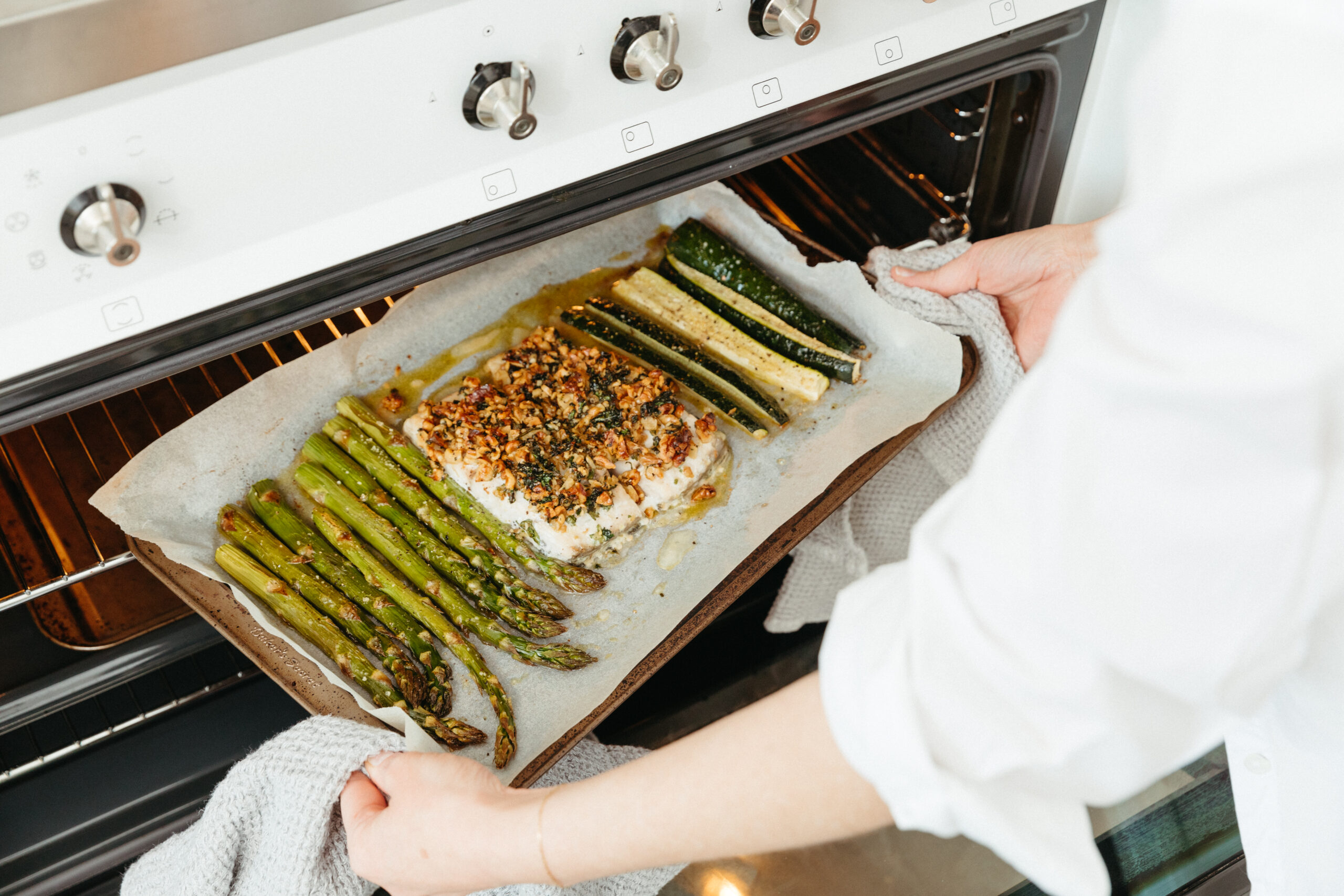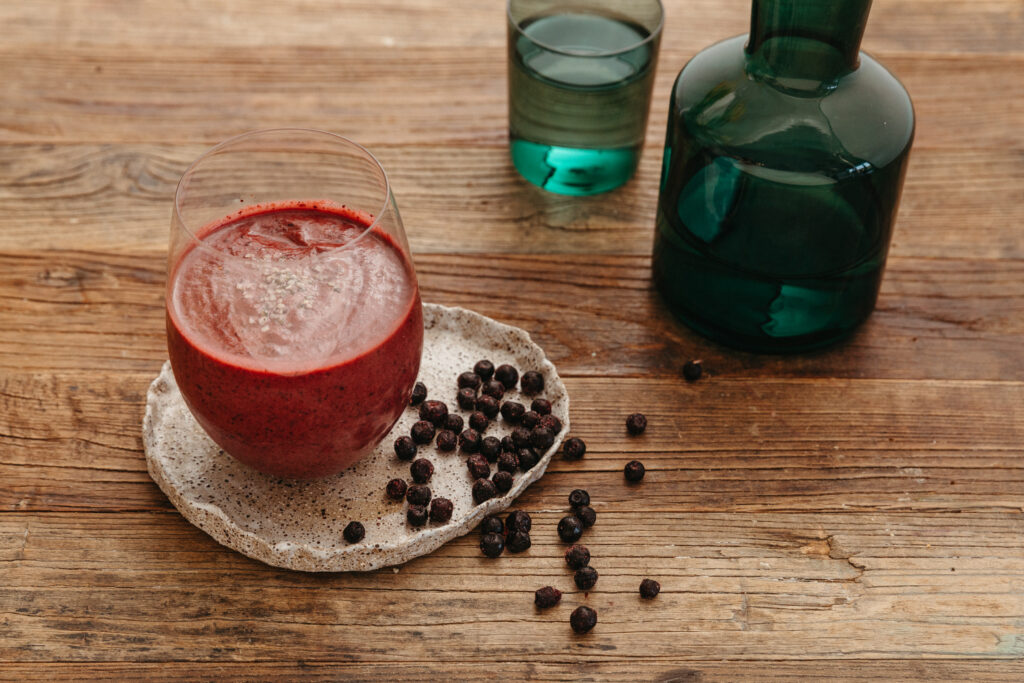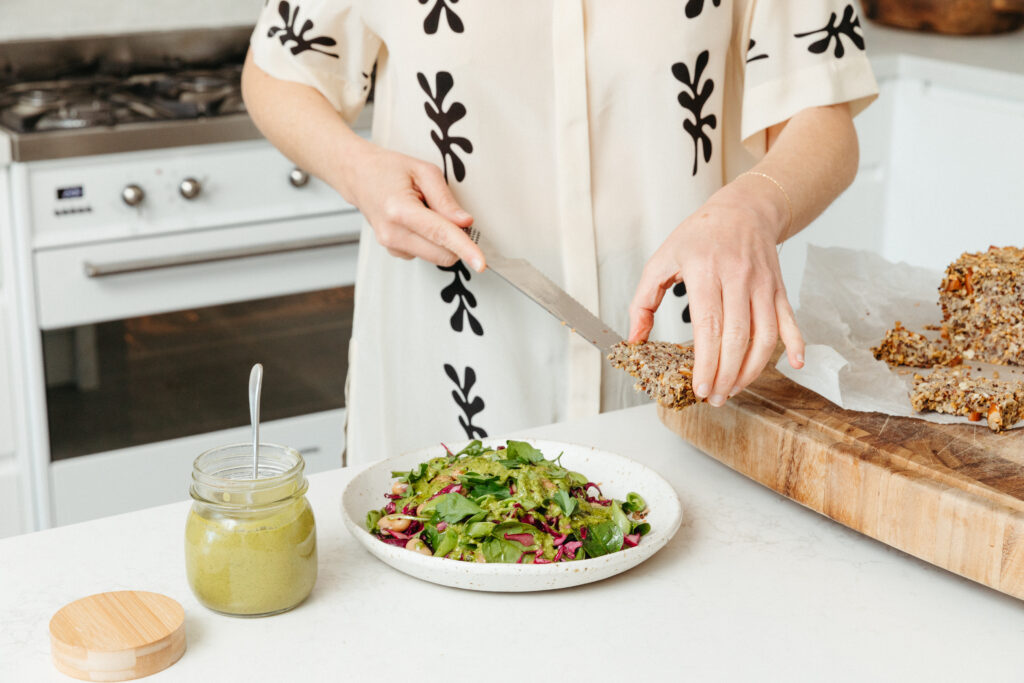Cooking and eating healthy doesn’t have to be difficult, time consuming or intimidating. Spending a few extra moments here and there, or a few extra hours once a week, can set you up for success. Consider these healthy kitchen tips when following our nutritional plans:
Step one. Plan!
Without a plan, it can be hard to decide what to eat for each meal. Follow our meal plans and take away the guesswork on early mornings or late, tired nights. Follow shopping lists to avoid forgetting critical ingredients or panic buying in the supermarket which leads to waste. Having a plan sets you up for success.
Step two. Stay organised
Stay on top of keeping your fridge and pantry clean and organised. At the end of each week do a quick organise and stocktake of what is left in your fridge and pantry before writing your shopping list so that you know exactly what is needed. A clean and organised kitchen helps you think clearer about your food choices.
Step three. Sourcing and storing ingredients
- Fresh herbs – your local farmer’s market or green grocer is likely to sell fresh herbs in much bigger bunches than you can find at the supermarket. It is even better to grow your own! If you are short on space consider a balcony garden or some pots by your window sill. To prolong the life of your fresh herbs store them in water-filled glass jars and cover with a plastic bag. Change the water every few days to keep your herbs super fresh.
- Produce and eggs – consider shopping at your local farmer’s market once weekly for produce and eggs. Buying from the farmer’s market is a great way to ensure you are eating locally and in season, plus the produce you end up with is generally way better. A great way to know more about the source of your food is simply striking up a conversation with your local farmer. Did you know that eating in season is a great way to help our bodies function at optimum level? Farmer’s markets also sell the best raw honey! Keep an eye out for your local bee-enthusiast.
- Dry products – consider shopping at your local bulk food store for ingredients including nuts, seeds, spices, flours and grains. Take your own jars to tare or transfer ingredients into your own containers or jars at home. Bulk food stores often have a monthly discount day so keep an eye out for this and stock up. Another great option for dry goods is to shop online in bulk. There are many great online retailers such as iHerb and Goodness Me. Stock up for the month ahead on staples such as nut butter, oils, seeds and condiments.
- Oils – both supermarkets and specialty stores stock a great range of oils. When buying products such as olive oil, sesame oil, avocado oil and coconut oil, opt for extra virgin or cold pressed where possible. Oils are best stored in a cool, dark place.
Step four. Use leftovers
When looking at your leftover produce, consider what can be frozen (e.g berries, bananas) and what can be cooked (e.g. most vegetables). Roast leftover vegetables and add as a side to your meals, add to a frittata or blitz into a soup. Leftover or wilted herbs can be blended with a little olive oil or water and frozen in ice cube trays for future use.
When looking at your leftover produce, consider what can be frozen (e.g. berries, bananas) and what can be cooked (e.g. most vegetables. Roast leftover vegetables and add as a side to your meals, add to a frittata or blitz into a soup. Leftover or wilted herbs can be blended with a little olive oil or water and frozen in ice cube trays for future use.
Step five. Cook in bulk
Cook once, eat twice (or three times, or four). Consider doubling meals that can easily be frozen. Soup, curries and stews all make for great freezer food. Simply defrost overnight in the fridge and heat up on the stove or oven. Almost all baked goods, such as muffins, truffles and slices, can be made in bulk and frozen. When making any type of loaf, slice before freezing. Pesto can be made in bulk and frozen in small jars or containers.
Having nutrient dense meals in your freezer is an especially great idea for those late nights when you are time-strapped and would otherwise be reaching for convenient or fast food.
Step six. Soak and sprout your grains, nuts and seeds
When you have the extra time, take a moment to properly prepare your foods for added nutrient density. Soaking your grains, nuts and seeds helps reduce anti-nutrients, increase digestibility and improve the nutritional profile. Soak grains such as rice, quinoa and oats in filtered water with a splash of apple cider vinegar for up to 12 hours, then rinse before cooking. There are great resources on the internet for soaking nuts and seeds that will provide you with the time and process needed for each individual type.
At Fluidform, we are all about setting yourself up for success through preparation. Try this fool-proof condiment, bursting with flavours to upgrade any meal. Add to any salad or sandwich and turn your boring office lunch into a delicacy!
Toasted Pine Nut Pesto
INGREDIENTS
- 1 bunch of basil, leaves picked
- 30g parmesan, grated finely
- 1 garlic clove
- 2 tbsp lemon juice
- 2 tbsp pine nuts or cashews, toasted
- 1/2 cup extra virgin olive oil
- 1/2 tsp salt
- Pinch of cracked black pepper
METHOD
Add all pesto ingredients to a food processor or blender. Blitz until combined.
Pesto can be stored in the fridge for up to 7 days, or frozen in airtight containers or jars for up to 3 months!
To make this dish vegan, leave out the parmesan or replace with 30g of nutritional yeast.








